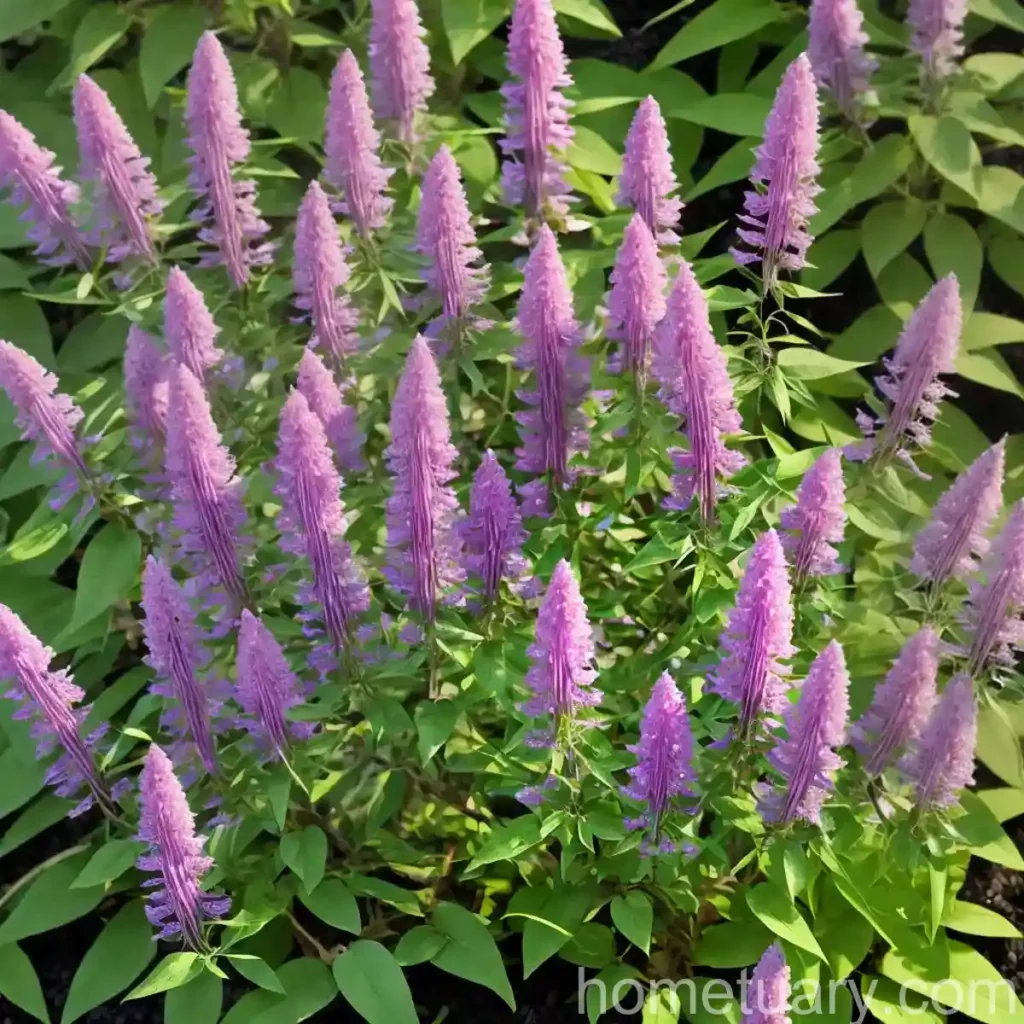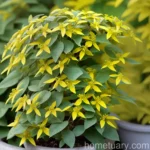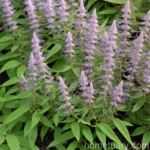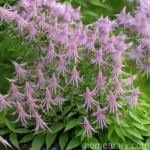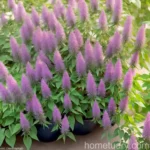Bush Clover (Lespedeza capitata): A Comprehensive Guide
The world of plants is filled with a diverse array of species, each with its own unique characteristics, uses, and cultural significance. One such plant is the bush clover, scientifically known as Lespedeza capitata. This beautiful perennial herb belongs to the legume family, Fabaceae, and is known for its ecological importance, ornamental value, and various uses in landscaping and gardening. In this comprehensive guide, we will explore the key aspects of bush clover, including its characteristics, cultivation, care tips, propagation, and its significance in ecological conservation and sustainability.
What is Plant: Bush Clover (Lespedeza capitata)
Bush clover, or Lespedeza capitata, is a perennial herbaceous plant that is native to the eastern United States. It is a member of the legume family, which means it has the ability to fix nitrogen in the soil through its symbiotic relationship with nitrogen-fixing bacteria. This plant is known for its upright and bushy growth habit, adorned with clusters of small, pea-like flowers that bloom in shades of pink, white, or purple, depending on the variety. The flowers appear in late summer to early fall, adding vibrant color to the landscape.
Lespedeza capitata Characteristics
- Family: Fabaceae
- Genus: Lespedeza
- Species: capitata
- Common Names: Bush clover, round-headed bush clover
- Habit: Herbaceous perennial
- Flower Color: Pink, white, purple
- Blooming Period: Late summer to early fall
- Ecological Significance: Nitrogen fixation, wildlife habitat, erosion control
- Cultural Uses: Landscaping, wildlife conservation, ecological restoration
As we delve deeper into the world of bush clover, we will uncover its many facets, including its cultural uses, care requirements, companion plants, and its contributions to ecological balance and sustainability.
Key Takeaways – Bush Clover (Lespedeza capitata)
Before we embark on our journey to understand the intricate details of growing and caring for bush clover, let’s summarize the key takeaways of this remarkable plant.
- Cultural Uses: Bush clover is valued for its ornamental qualities and is commonly used in landscaping, ecological restoration projects, and wildlife habitat enhancement.
- Ecological Significance: It plays a vital role in ecological conservation through nitrogen fixation, erosion control, and providing essential resources for pollinators and wildlife.
- Cultivation: Growing bush clover in gardens and natural landscapes contributes to biodiversity, sustainability, and the overall health of the ecosystem.
- Care Tips: Understanding the water, sunlight, soil, fertilizer, and pruning requirements is essential for maintaining healthy and vibrant bush clover plants.
- Propagation: Learning about the methods of propagating bush clover ensures the expansion of its presence and benefits in various environments.
Now that we have outlined the key points, let’s delve into the details of each aspect of bush clover, from its cultural uses to the propagation methods, and how it contributes to ecological well-being.
Culture
Cultivating bush clover involves understanding and implementing the right cultural practices to ensure its optimal growth, health, and contribution to the ecosystem. Here are the essential cultural aspects to consider when growing and caring for bush clover.
Uses
Landscaping
One of the primary cultural uses of bush clover is its role in landscaping. With its attractive clusters of flowers and bushy growth habit, bush clover adds visual interest to gardens, natural landscapes, and wildflower meadows. Its late summer to early fall blooming period makes it a valuable addition to gardens, providing nectar and pollen for late-season pollinators such as bees, butterflies, and other beneficial insects.
Ecological Restoration
Bush clover also plays a significant role in ecological restoration projects. Its ability to fix nitrogen in the soil contributes to the improvement of soil fertility, making it an essential component in the restoration of disturbed ecosystems, degraded lands, and areas affected by erosion. Furthermore, its presence enhances habitat quality for wildlife, supporting biodiversity and conservation efforts.
Wildlife Habitat
The dense growth and nectar-rich flowers of bush clover make it an attractive resource for various wildlife species, including pollinators, songbirds, and small mammals. By planting bush clover, individuals contribute to the creation and enhancement of wildlife habitat, promoting the well-being of diverse flora and fauna within the ecosystem.
Water
Understanding the water requirements of bush clover is crucial for its successful cultivation and maintenance. As a native plant of the eastern United States, bush clover has adapted to a range of moisture conditions, including well-drained soils and occasional periods of drought. While it demonstrates some level of drought tolerance, providing adequate moisture, especially during the establishment phase, is essential for ensuring healthy growth, blooming, and overall vigor.
Water Requirements:
- Establishment Phase: Regular watering during the first growing season
- Mature Plants: Tolerates moderate drought once established; occasional deep watering during prolonged dry periods can encourage robust growth and flowering
- Soil Moisture: Well-drained soil; avoid waterlogged conditions
Sunlight
Bush clover thrives in full sun to partial shade, making it adaptable to a range of light conditions. When selecting a planting site, it is important to consider the sunlight requirements to provide an environment that promotes healthy growth and abundant flowering.
Sunlight Requirements:
- Full Sun: 6-8 hours of direct sunlight per day; ideal for promoting vigorous growth and profuse blooming
- Partial Shade: Tolerates dappled sunlight or light shade; suitable for areas with filtered sunlight or morning sun with afternoon shade
Fertilizer
Being a leguminous plant, bush clover has the inherent ability to fix nitrogen in the soil through its symbiotic relationship with nitrogen-fixing bacteria known as rhizobia. This biological nitrogen fixation reduces the need for supplemental nitrogen fertilizer, making bush clover an eco-friendly and sustainable choice for gardens and landscapes. However, providing a balanced and organic-rich soil environment can further support its growth and flowering performance.
Fertilizer Recommendations:
- Soil Amendment: Incorporate organic matter such as well-rotted compost or aged manure into the planting site to improve soil structure and fertility
- Minimal Fertilization: In most cases, bush clover does not require additional fertilizer due to its nitrogen-fixing capabilities; minimal supplemental fertilization may benefit plants in poor soil conditions
Soil
The soil conditions significantly influence the growth, vigor, and overall health of bush clover. Understanding the preferred soil characteristics and making necessary amendments contribute to successful cultivation and resilience of the plant.
Soil Requirements:
- Well-Drained Soil: Essential to prevent waterlogging and root rot; avoid heavy clay soils and compacted substrates
- pH Level: Tolerant of a wide range of soil pH, preferably slightly acidic to neutral (pH 6.0-7.0)
- Soil Texture: Loamy or sandy loam soil with good drainage; adding organic matter improves soil structure and fertility
Pruning
Proper pruning techniques help maintain the compact, bushy form of bush clover and encourage prolific flowering. While this plant requires minimal pruning, timely removal of spent blooms and occasional shaping contribute to its overall appearance and health.
Pruning Guidelines:
- Deadheading: Remove faded or spent flower clusters to promote continuous blooming and prevent self-seeding
- Late Winter or Early Spring: Cut back the previous year’s growth to encourage new shoots and denser foliage
- Minimal Pruning: Avoid excessive or frequent pruning, as bush clover generally maintains a tidy and compact growth habit
Propagation
The propagation of bush clover can be achieved through various methods, including sowing seeds, division, and stem cuttings. Understanding these propagation techniques allows for the expansion of bush clover in gardens, natural areas, and restoration projects.
Propagation Methods:
- Sowing Seeds: Collect mature seeds and sow them in a prepared seedbed or containers in late fall for natural stratification; germination usually occurs in the following spring.
- Division: Divide established clumps in early spring or fall, ensuring that each division has sufficient roots and shoots for successful establishment.
- Stem Cuttings: Take semi-hardwood cuttings in late spring or early summer, rooting them in a well-draining propagation medium with the use of rooting hormone; keep the cuttings in a warm, sheltered environment until they develop roots.
Container Popularity
While bush clover is commonly grown in garden beds, it also has potential as a container plant. Its moderate size and bushy growth habit make it suitable for container cultivation, adding ornamental value to outdoor spaces such as patios, balconies, and porches.
Container Growing Tips:
- Pot Size: Select a container with sufficient depth and diameter to accommodate the root system and promote stable growth; consider a minimum pot size of 12-16 inches in diameter.
- Well-Draining Soil: Use a high-quality potting mix with good drainage to ensure proper aeration and moisture retention.
- Sunlight: Place the container in a location that receives adequate sunlight, providing at least 6 hours of direct sun per day for optimal growth and blooming.
- Watering: Check the moisture levels regularly and water the container consistently to keep the soil evenly moist, but not waterlogged.
- Overwintering: In regions with cold winters, protect container-grown bush clover by moving it to a sheltered location or providing insulation to the container during the dormant season.
Common Diseases
While bush clover is generally resistant to many common plant diseases, certain environmental conditions and cultural practices can make it susceptible to specific issues. It is essential to be aware of potential diseases and their management to maintain the health and vigor of bush clover plants.
Disease Diagnosis
Powdery Mildew (Erysiphe spp.):
- Symptoms: White powdery patches on the upper leaf surfaces; stunted growth; distorted foliage
- Management: Provide good air circulation; remove and destroy infected plant parts; apply horticultural oil or neem oil as a preventive measure
Leaf Spot (Various Fungal Pathogens):
- Symptoms: Circular or irregular brown spots on leaves; premature leaf drop; overall decline in plant vigor
- Management: Maintain clean garden practices; apply fungicidal sprays if necessary; remove and destroy infected foliage
Common Pests
Encounters with pests can disrupt the growth and appearance of bush clover, affecting its ornamental value and ecological contributions. Here are some common pests to watch for and appropriate measures to manage infestations.
Aphids (Aphidoidea spp.):
- Symptoms: Clusters of small, soft-bodied insects on tender new growth; distorted foliage; sticky honeydew deposits
- Management: Use strong blasts of water to dislodge aphids; introduce beneficial insects such as ladybugs or lacewings; apply insecticidal soap if populations are high
Leafhoppers (Cicadellidae spp.):
- Symptoms: Yellowing or stippling on leaves; presence of small, agile insects jumping from foliage when disturbed
- Management: Keep the garden area free of weeds; apply insecticidal sprays as needed; attract natural predators like parasitic wasps and spiders
As conscientious gardeners and stewards of the environment, it is important to monitor for signs of diseases and pests and employ integrated pest management strategies to maintain the health and vigor of bush clover plants.
Botanist’s Tips
In the closing section of our comprehensive guide to bush clover, we offer some key tips and insights from a botanist’s perspective, shedding light on the unique attributes and significance of this remarkable plant.
Fun Facts
- Nitrogen-Fixing Ability: Bush clover’s role in fixing atmospheric nitrogen in the soil enhances soil fertility and reduces the need for chemical fertilizers, contributing to sustainable gardening practices.
- Pollinator Magnet: The abundant nectar and pollen of bush clover flowers attract various pollinators, making it a valuable resource for bees, butterflies, and other beneficial insects.
- Wildlife Support: The dense foliage and seeds of bush clover provide food and cover for small mammals, birds, and other wildlife species, contributing to the overall biodiversity of the ecosystem.
Links to External Resources
To further expand your knowledge of bush clover and its significance in gardening, ecological conservation, and sustainability, we recommend exploring the following external resources:
- Lady Bird Johnson Wildflower Center – Lespedeza capitata
- USDA NRCS Plant Database – Lespedeza capitata
- University of Florida IFAS Extension – Lespedeza capitata Fact Sheet
- Missouri Botanical Garden – Lespedeza capitata
- North Carolina State University Extension – Lespedeza capitata
With the wealth of information provided in this comprehensive guide, we hope that you have gained a deeper appreciation for bush clover and its multifaceted role in horticulture, ecology, and sustainability. Whether you are considering adding this plant to your garden, exploring its ecological benefits, or seeking to enhance wildlife habitat, bush clover stands as a compelling example of a plant that combines aesthetic appeal with ecological significance. As you embark on your journey with bush clover, may you find joy in its beauty, purpose in its ecological contributions, and inspiration in its resilience and sustainability.
By immersing ourselves in the world of plants such as bush clover, we gain a profound understanding of the interconnectedness of nature and the invaluable role that each species plays in creating and sustaining healthy, vibrant ecosystems. Let’s continue to celebrate and champion the diversity and ecological contributions of plants, nurturing a deep appreciation for their beauty, utility, and most importantly, their role in preserving the natural world.
References:
- Lady Bird Johnson Wildflower Center. (n.d.). Lespedeza capitata. Wildflower.org. Link
- USDA NRCS Plant Database. (n.d.). Lespedeza capitata. Plants.sc.egov.usda.gov. Link
- University of Florida IFAS Extension. (n.d.). Lespedeza capitata Fact Sheet. Edis.ifas.ufl.edu. Link
- Missouri Botanical Garden. (n.d.). Lespedeza capitata. Missouribotanicalgarden.org. Link
- North Carolina State University Extension. (n.d.). Lespedeza capitata. Plants.ces.ncsu.edu. Link
Please note that the information provided in this guide is for educational purposes and is not intended as specific advice for plant cultivation. Always consult local gardening resources and experts before implementing new practices in your garden.

